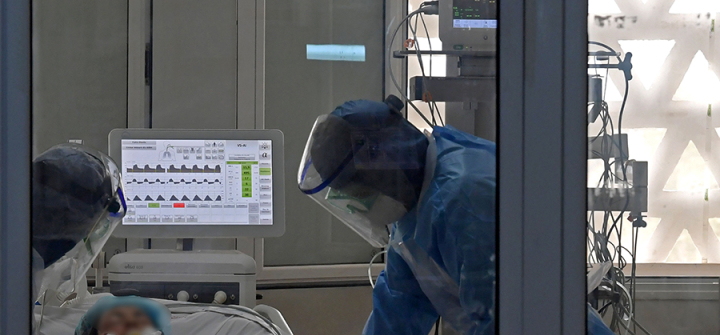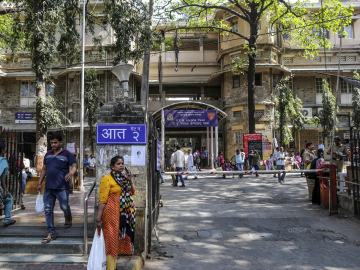COVID-19 and the Critical Shortage in Critical Care
15 million people. 20 intensive care beds.
Somalia is not prepared for the COVID-19 pandemic, and neither are dozens of countries around the world. SARS-CoV-2 is wreaking havoc on the world’s population, costing the lives of hundreds of thousands of people and harming millions more. Patients who become critically ill from COVID-19 require weeks of treatment in intensive care units, and many are intubated and ventilated to have even a chance of survival. New York City has 1,600 ICU beds, but in low- and middle-income countries, such a number is a luxury. All of sub-Saharan Africa, excluding South Africa, only has just over 2,000 beds.
For decades, global health has encouraged countries to focus on individual diseases in silos. This has left health systems with insufficient capacity to manage population-level threats like COVID-19. Foremost among the needs is critical care capacity.
Our recent article in the Journal of Critical Care published the first global mapping of the ICU bed availability and revealed disturbing disparities in critical care capacity. The US enjoys 34.7 ICU beds per 100,000 people—although major hubs like New York, Boston, and Seattle recently came close to reaching their limits. However, all but 3 African countries have fewer than 5 beds per 100,000 people. Worse, a majority of the countries had fewer than 1 bed per 100,000.
When COVID-19’s peak hits countries that are yet to face the surge in cases, the repercussions will be major. Baseline capacity has already been reached in many LMICs around the world even though only a few hundred cases may have been confirmed per country. Makeshift ICU beds have been made by converting operating theaters and upgrading nonclinical spaces. But these steps only go so far. COVID-19 patients often require extended stays in ICUs, and once elective surgeries are resumed, this will lead to a further strain on ICUs around the world.
And increasing ICU beds is only part of the puzzle. Beds are of no help when there is no skilled workforce to manage patients requiring them. Critical care medicine is unique, challenging, and dynamic. It requires attentive, skilled nurses, respiratory therapists, and intensivists to adequately treat patients in the ICU. In LMICs, these human resources are more often a luxury than not. Many have only a handful of health workers who are trained in critical care, if any at all. Ventilators are critical equipment to keep patients alive and maintain hope for survival; however, they are as rare as ICU beds. Mali, for example, has only 56 ventilators for 19 million people—hardly sufficient for any meaningful response.
As hard-hit countries scramble to create ICU capacity through makeshift beds in old hospitals and public buildings, important questions will arise:
- Will critical care services maintain an effective health workers-to-patient ratio?
- Will a higher number of beds spread the resources thinner than before?
- Will a higher number of beds lead to a rising number of overworked and sick health personnel?
As senior medical students, health workers, and non-intensivist specialists are forced to retrain as ICU providers, many will do so reluctantly because of a recognition of their limitations. Tele-ICUs are being implemented as a means to provide the best care to the largest number of patients, although the learning curve for health workers and occasionally the lack of digital infrastructure in hospitals impede these efforts. Nevertheless, these ought to be applauded as the current best efforts though they are a temporary patch hiding bigger public health dilemmas.
Responding to COVID-19 entails more than immediate containment, patient management, and temporary expansions. The global critical care capacity is lacking and requires systematic changes to global health strengthening in order to save the lives of hundreds of thousands more in the years to come.
Somalia only has 20 ICU beds for 15 million people. Why is that acceptable?
Xiya Ma, MSc, is a medical student at the Universite de Montreal with a passion for global health, surgery, and health services research. She currently leads the International Student Surgical Network (InciSioN), the world's largest trainee-led global surgery organization.
Dominique Vervoort, MD, is an MPH/MBA student at the Johns Hopkins Bloomberg School of Public Health and the Johns Hopkins Carey Business School. Having completed the Paul Farmer Global Surgery Fellowship at Harvard Medical School, he is interested in global health equity and health systems strengthening.
For the latest, most reliable COVID-19 insights from some of the world’s most respected global health experts, see Global Health NOW’s COVID-19 Expert Reality Check.
Join the tens of thousands of subscribers who rely on Global Health NOW summaries and exclusive articles for the latest public health news. Sign up for our free weekday newsletter, and please share the link with friends and colleagues: https://www.globalhealthnow.org/subscribe
Medical staff care for a COVID-19 patient in the intensive care unit of the Ariana Mami hospital near the Tunisian capital Tunis on April 22, 2020. Image: Fethi Belaid /AFP via Getty Images




